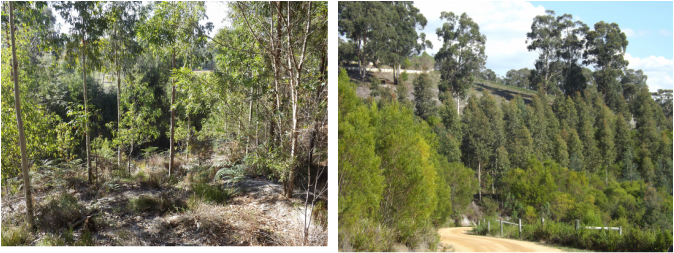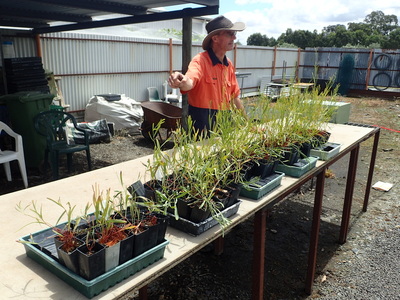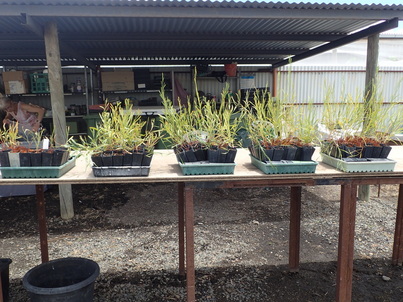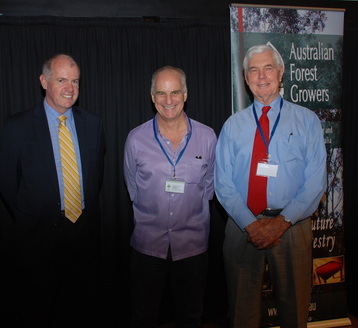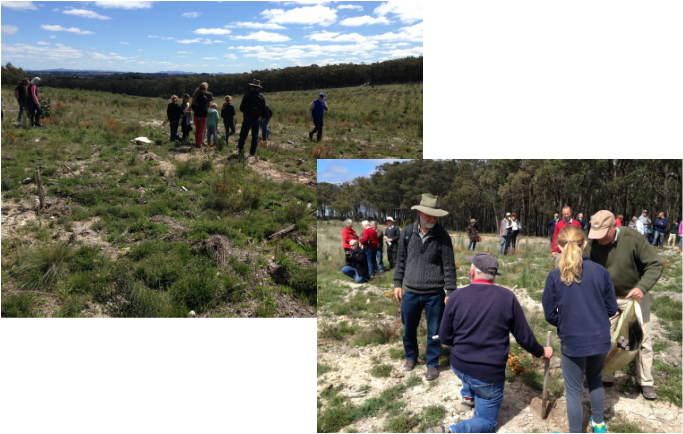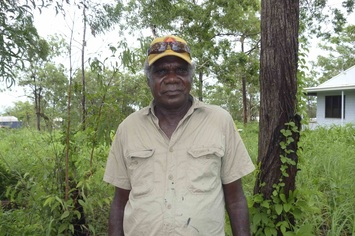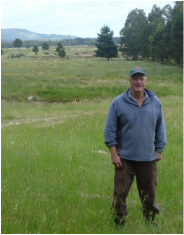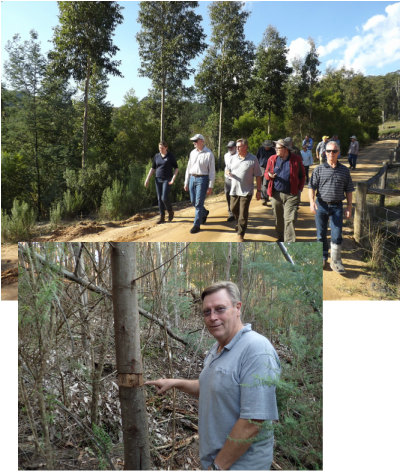
Imagine his surprise when what outpaced the spotted gum were not weeds, but local indigenous species like silver wattle, messmate and dogwood. They blanketed the site, not only holding the soil, but moreover gifting Peter his very own weed-free analogue forest.
Eight years on the site has the look and feel of natural forest and his only real problem is stopping the silver wattle from overtopping the gums. His solution is ringbarking those particularly bolshie wattles (on right).
President of the Gippsland Agroforestry Network, Peter loves his forest and the magnificent views he gets from the new house he's built on top of the hill above his forest. He's trying to add to the analogue forest, but having problems... The wallabies that have moved into the new habitat he's created regard Peter's attempts at further plantings of spotted gum tubestock as delicious tidbits ripe for the taking right on their front doorstep. On a field day visit, one of those in the group talked about how he had designed a supposedly wallaby-proof fence, which he's going to lend to Peter. We'll have to wait and see whether or not that enables the analogue forest to expand!
